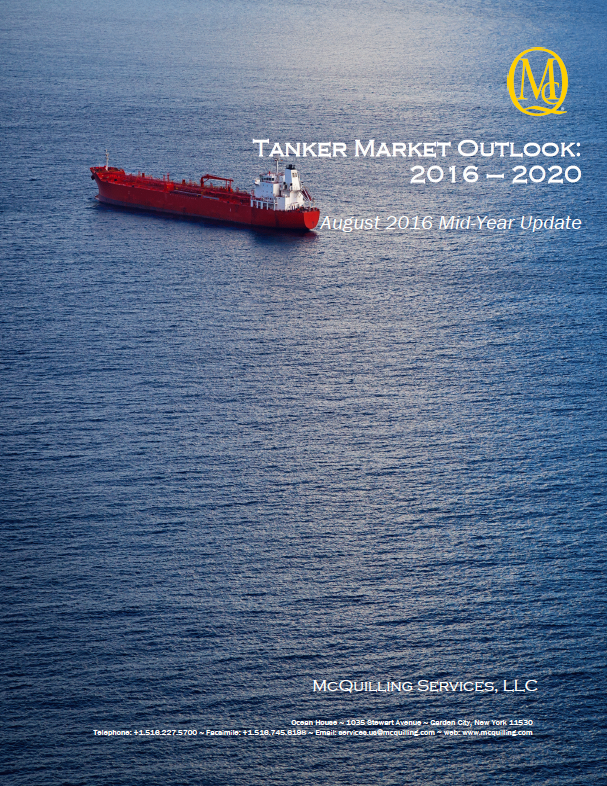Tanker Demand Update
Aug. 25, 2016
Demand for tankers is segmented along vessel classes by size and cargo type; however, there can be significant cross-over demand between segments. Tanker demand is a derived demand, driven by regional economic activity and increased energy consumption. The primary driver of tanker demand is the transportation of crude oil and residuals at 83% of the total call on tankers; however, we have observed a growing volume of refined products transported.
Crude and residuals transport totaled just over 9.5 trillion ton-miles in 2015, the second highest recorded ton-mile demand, trailing only 2012. Total demand growth is expected to decelerate in 2016 as weakening refinery margins and supply disruptions in key loading regions negatively impact transportation requirements.
The majority of crude and residual fuel is carried on VLCCs with the Arabian Gulf > Far East route being the most voluminous regional trade for this vessel class. The Far East currently holds about 20.1 million b/d of refining capacity, while crude production in the region is less than 7 million b/d, of which 63% is located in China. Suezmaxes represent the next largest percentage of ton–mile demand; however, demand in this sector is poised to contract this year. Supply disruptions in West Africa have decreased trade flows north toward the European continent, further pressuring Suezmax tanker demand. In the Aframax segment, demand has been in decline since 2011 partly due to decreasing trade flows from the Caribbean to the United States Gulf Coast. The main cause of this decline since 2010 is due to the availability of Canadian heavy production and US output, which had been locked in the domestic refining system until last year’s US export ban-removal. However, a decline in US production, coupled with the short-term supply disruptions in Canada, has prompted additional imports from the Caribbean. With the resurgence of these import flows and emerging US crude exports, we forecast an increase in Aframax demand on this trade in 2016. The Panamax sector represents a minor portion of total dirty tanker demand at about 200 billion ton-miles in 2015, considered more as a collection of regional, niche markets.
Significant increases in naphtha demand East of the Suez and additional consumption of gasoline and jet fuel in the West is projected to support a rise in refined product ton-mile demand. Unlike dirty product demand, there is a far wider distribution of ton-miles generated by load regions with respect to the transportation of refined products. We track and analyze clean product tankers ranging from the MR1 (27,500 – 39,999 dwt) to the coated Aframax tanker (75,000 – 119,999 dwt), better known as LRs. Both the LR2 and LR1 tanker sectors are dominated by the condensate/naphtha trade from the Middle East to the Far East, primarily Japan. The LR1 tanker has the versatility to compete with its LR2 cousin on some trades, but can also capture smaller cargo stems, historically carried out by MR2s. About 40% of total product carrier demand is transported on MR2 tankers, down considerably over the last five years as more LR-sized tankers enter the fleet.
Order a copy of McQuilling Services 2016 Mid-Year Tanker Market Update
This report provides an outlook for monthly spot market freight rates and TCE revenues for 18 major tanker trade s on eight vessel segments for the second half of the year and the remaining four years of the forecast period. All projections are based on market performance from the first half of the year
s on eight vessel segments for the second half of the year and the remaining four years of the forecast period. All projections are based on market performance from the first half of the year









